ブライダル
bridal
伝統技術
crafts
-
ジュエリーjewelry
-
ハイジュエリーhigh jewelry
-
オプションoptions


伝統と洗練が織りなす粋のかたち
さまざまな芸術や文化が
豊かに花開いた江戸時代
脈々と受け継がれる
匠の技と美意識が
いま再び芽吹く
「巴」 それは
異なるものが結びあって織りなす
うつくしきかたち
伝統と洗練 過去と未来
ふたりにしか織りなせない
ふたりだけのかたち
さりげない意匠の一つひとつに忍ばせた
物語をひもとくたびに
ふたりの絆は 深まっていく
The many different artistic techniques and
cultures that flourished in abundance
in Japan’s Edo period (1603–1867).
The ceaseless handing down of fine artisanship
and aesthetic sense.
All this is starting to bud again now.
The tomoe is a traditional Japanese heraldic design
of two interlocking comma-shaped figures.
Two different things uniting and
weaving a new beautiful shape together.
Tradition and refinement.
Past and future.
A shape for two and two alone.
A shape that only two people can weave.
The bonds between two people deepen each time
they unravel the story concealed in each individual casual design.
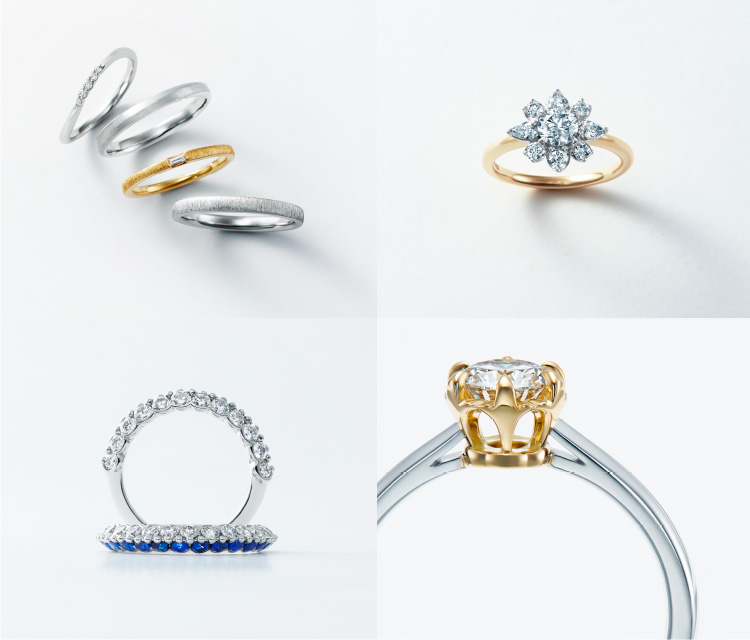
「巴」のかたちを表現した白い線を辿れば
永遠にとぎれることのないふたりの輪廻があらわれる
そのふたりの輪廻に運命の糸を乗せて完成する
TOMOEのロゴマーク
ふたりにしか織りなせないふたりだけの絆を
神聖なうつくしさで象りました
Tracing the white line that expresses the Tomoe (巴) form reveals a couple’s cycle of life and rebirth that will continue uninterrupted for all time.
Placing a string of destiny on the couple’s reincarnation cycle completes the Tomoe logomark.
A unique connection that only a couple can interweave, shaped with sacred beauty.
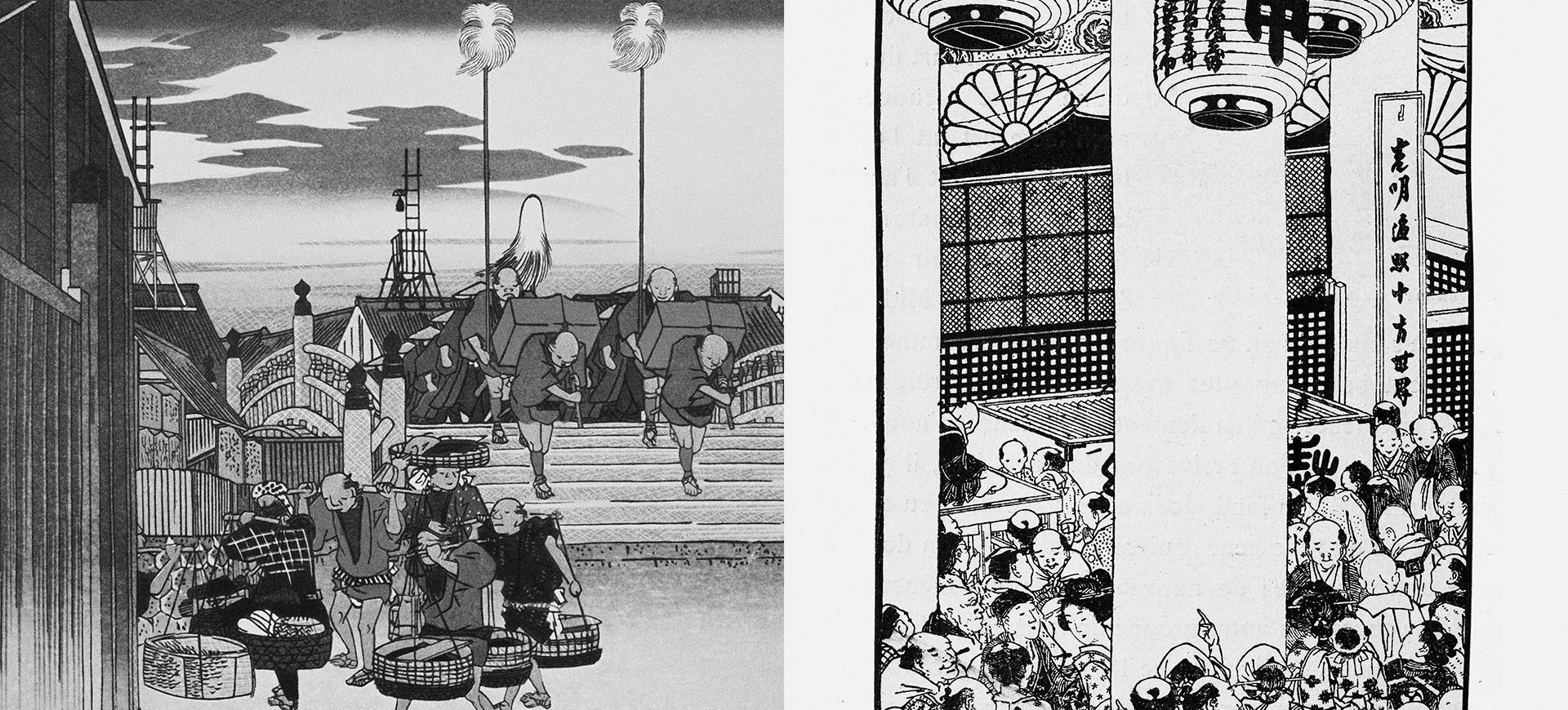
TOMOEが別邸を構える東京・御徒町。かつて江戸の職人たちが腕を競い合ったこの町は、いまなお伝統工芸の職人が多く住む町として、粋の心を今に受け継いでいる。
そのルーツをひもとくと、武士の歴史にたどり着く。町名のもとになった「御徒( おかち)」「徒士( かち)」とは、江戸幕府や諸藩に所属しながらも、騎馬が許可されずに徒歩で戦っていた武士のこと。
御徒の住む屋敷地は深川元町や本所錦糸堀などにも点在したが、中でも「下谷」と呼ばれた地域に御徒の組屋敷がいくつもあったため、この地域に「御徒町」の名が定着するようになった。
江戸時代後期になると、御徒は屋敷の庭で観賞用の朝顔を栽培して糊口をしのぐようになる。
やがて、その朝顔を展示販売する「朝顔の市」が入谷鬼子母神の境内で開かれるようになった。
これが、現在まで続く江戸下町の夏の風物詩、「入谷朝顔まつり」である。
公務だけでなく、江戸独特の情緒づくりにも貢献した武士、それが御徒だったとも言えよう。
TOMOE Annex is located in Okachimachi, Tokyo.
A custodian of the spiritual essence of Edo, this town witnessed many talented competing artisans in the Edo period (1603-1868) and is still home to many traditional craftspeople today.
The town’s name reveals some samurai history.
Okachi were low-class samurai foot soldiers who belonged to the Tokugawa Shogunate or other domains but weren’t permitted to ride a horse.
Their living quarters were scattered around Fukagawa-Motomachi and Honjo-Kinshibori, but several residences were concentrated in Shitaya and so the region became known as Okachimachi, or the town of the foot solider.
In the late Edo period, the soldiers used to eke out an existence by cultivating asagao (Japanese morning glory) flowers in the gardens of their barracks.
Before long, the asagao market was opened in the grounds of the Iriyakishimojin (Shingenji Temple) in Taito ward.
Today, the annual Iriya Asagao festival reminds us of downtown Edo in summer.
So the okachi foot solider not only contributed to Edo public affairs, but also to the city’s unique emotional development.
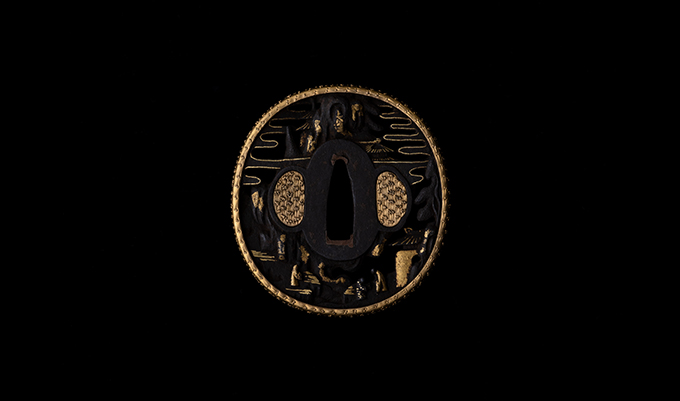
もともと浅草寺をはじめ数え切れないほどの寺社があった御徒町付近には、仏具や銀器の飾り職人が多く集まっていた。
また、御徒町のある台東区には、古くは浅草、吉原、柳橋、黒門町、湯島、根津などの域街・色街が点在していたことから、櫛・笄( こうがい)・簪( かんざし)といった髪飾りなどの小間物をつくる職人も集まっていた。
布をはじめ、べっ甲や象牙、サンゴや銀などの素材で凝った装飾を施した小間物は、その一部が「江戸つまみ簪」などへ受け継がれ、いまなおこの地でつくられている。
やがて、明治維新に行われた廃仏棄釈( はいぶつきしゃく)の流れで、仏具職人は神道用具や小間物の職人へと転向。
また、刀剣の装飾を作っていた錺( かざり)職人も、小間物や宝飾品の職人へと転向し、その腕を競い合うようになる。
いつしか御徒町は、伝統工芸の職人の町として名を馳せるようになった。
Originally home to the famous Sensoji and many other temples, the Okachimachi area started to attract craftspeople of Buddhist ritual utensils and silverware.
Crafters of small hair accessories such as combs, and functional or ornate hairpins also serviced the lively streets and red-light districts of Asakusa, Yoshiwara, Yanagibashi, Kuromoncho, Yushima, and Nezu, located in the same Taito ward as Okachimachi.
Some of these accessories, which were exquisitely adorned with fabric, tortoiseshell, ivory, coral, or silver materials, are still produced on the very same soil today, such as the Edo Tsumami Kanzashi (ornamental hairpin).
Later, the artisans who made Buddhist ritual utensils redirected their talent to crafting Shinto utensils and accessories as the 1868 Meiji Restoration encouraged the expulsion of Buddhism from Japan.
Crafters of ornate decorations for swords also turned their hand to creating fancy goods and jewelry, competing for the greatest skill.
Before anyone knew it, Okachimachi had made a name for itself as a town for expert traditional craftspeople.
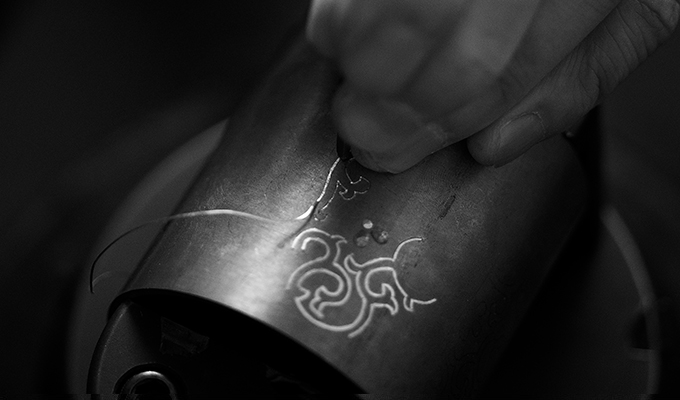
そんな江戸職人たちの技や、江戸の美意識を如実に物語るのが、多くの浮世絵にも描かれてきた「江戸小紋」であろう。
もともと江戸小紋とは、武士の礼装である裃( かみしも)が発祥である。参勤交代で江戸に集まる各藩の武士たちは、その礼装を他の藩と区別するために、それぞれの藩で「定め柄」を決め、その微細さを競い合ったのである。
その後、幕府から派手な着物を禁止した「奢侈( しゃし)禁止令」が発令されると、 武士や町人たちの飽くなき洒落心から、柄の緻密さがさらに発展。一見すると無地に見えるほど細かく規則正しくびっしり配列された小紋柄、いわゆる「江戸小紋」へと発展したのである。
より細かく正確に型紙を彫り、きっちり染め上げるために、職人たちの技術は急速に進化を遂げた。
そして、この江戸小紋の進化こそが、江戸の情緒や粋を大成させたともいわれている。幕府のきびしい統制の下でも、工夫を凝らして生活を楽しまんとする武士や町人たちの粋な遊びごころ。
そこに、江戸職人の高度な技術がまざりあい、江戸の多様な芸術や文化として大輪の花を咲かせたと言えよう。
TOMOEのリングには、こうした精神が受け継がれているのである。
The Edo Komon (fine patterns) depicted in many Ukiyoe prints are an actual representation of the Edo aesthetic and skilled artisanship.
Edo Komon originated from the fine patterns woven into a warrior’s formal dress.
To distinguish its formal dress from other clans when feudal lords were officially required to stay in Edo, each clan determined its own elaborate pattern so as not to be outdone by others.
After the Shogunate issued a sumptuary law banning gaudy kimonos, the patterns grew increasingly detailed to satisfy samurai and common townspeople’s insatiable appetite for elaborate fashion.
The fine patterns that developed into Edo Komon were so densely and systematically arranged that, on a brief glance, they could even be mistook for plain fabric.
Crafting techniques improved rapidly thanks to more detailed and accurate paper patterns, and more precise dyeing.
The perfecting of Edo Komon helped formulate the emotion and essence of Edo—the jaunty playfulness of scheming, fun-loving samurai and townsfolk living under strict Shogunate rule.
That sense of fun, coupled with the advanced artistry of Edo craftspeople, has helped Edo’s diverse techniques and culture bloom into a large-shaped flower.
That blossoming spirit lives on in our TOMOE rings.
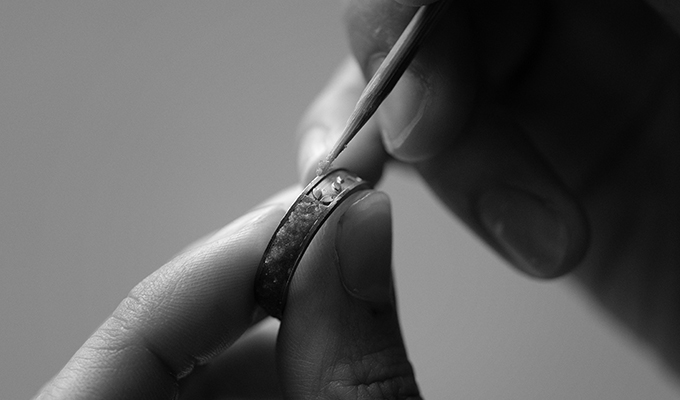
職人の町・御徒町は、近代になると宝飾品の街として発展。
第二次大戦後には、時計・宝飾の交換会である「市」が行われるようになり、現在ではジュエリーの街として全国的にその名を轟かせている。
御徒町を交差する路地には、ガーネット通り・ダイヤモンド通り・ひすい通り・エメラルド通り・ルビー通り・サファイア通りなど、宝石の名前がつけられている。
さまざまな文化が交じり合いながらも、江戸情緒を色濃く残す伝統工芸と宝飾の街、御徒町。
いまなお伝統工芸の職人が多く住み、江戸時代に花開いた技と洒落心を、連綿と現代へ語り継いでいる。
Skip forward to modern times and Okachimachi, ever the town of the artisan, has developed into a renowned jewelry town.
Having hosted a “market” for exchanging watches and jewelry after the Second World War, Okachimachi later became known nationwide for its jewelry.
The town’s intersecting alleys are fittingly named after precious gems: Garnett Street, Diamond Street, Jade Street, Emerald Street, Ruby Street, Sapphire Street, and many more.
Okachimachi, a special town of traditional crafts and jewelry-making, embraces a diverse blend of cultures while maintaining a distinct Edo atmosphere, and is still home to many traditional craftspeople, who continue to convey the skill and sense of chic that blossomed in the Edo period.